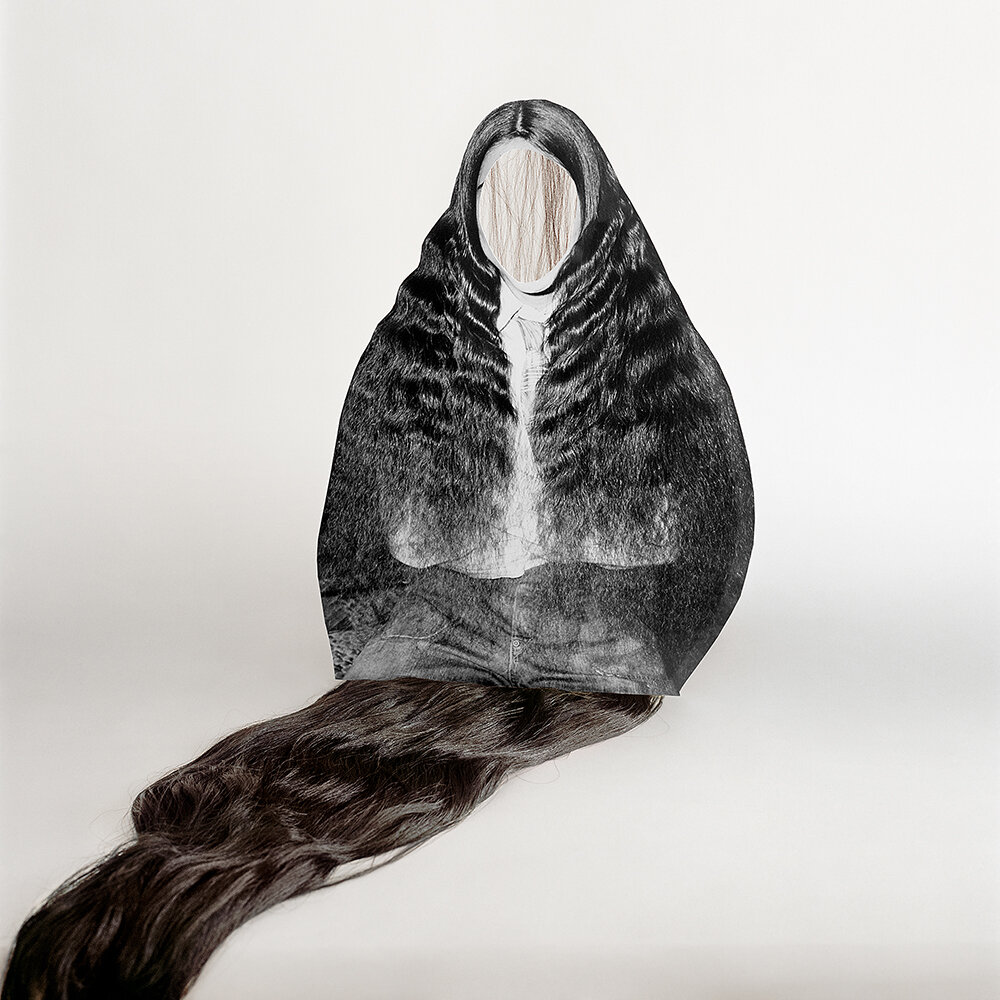
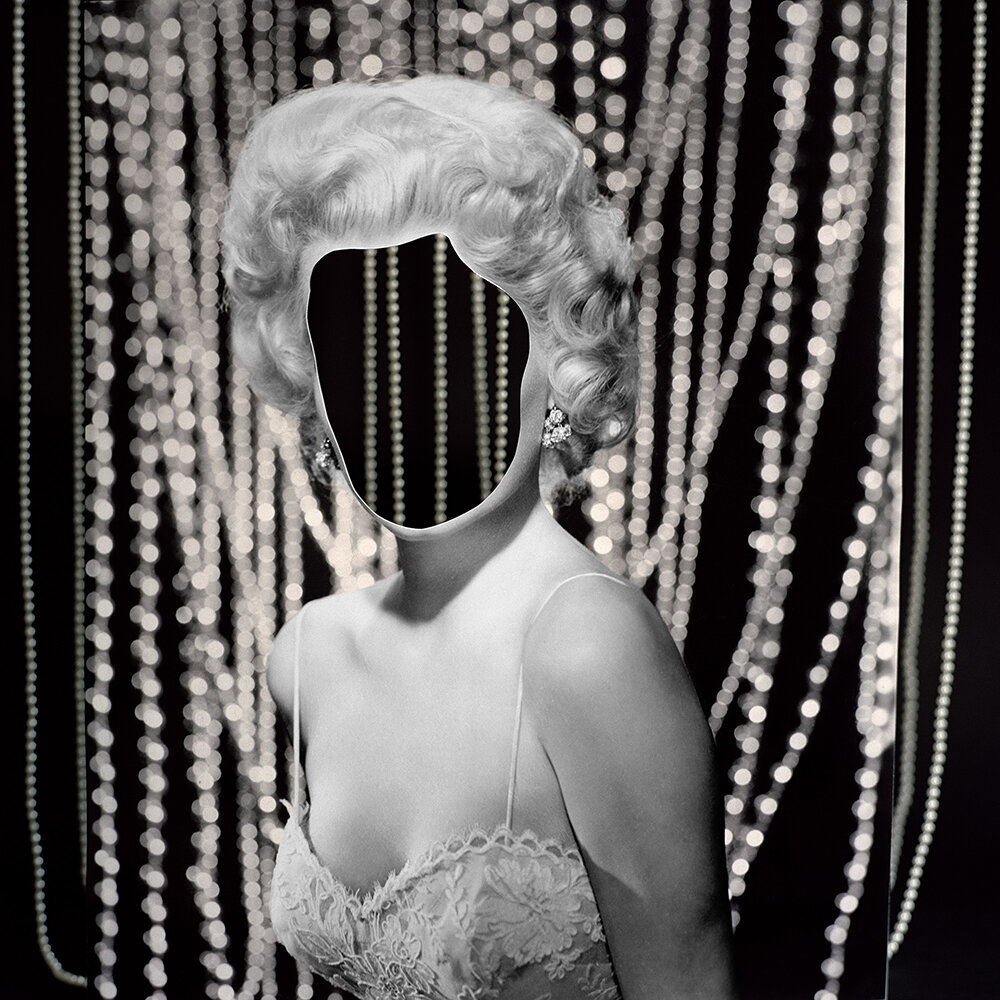
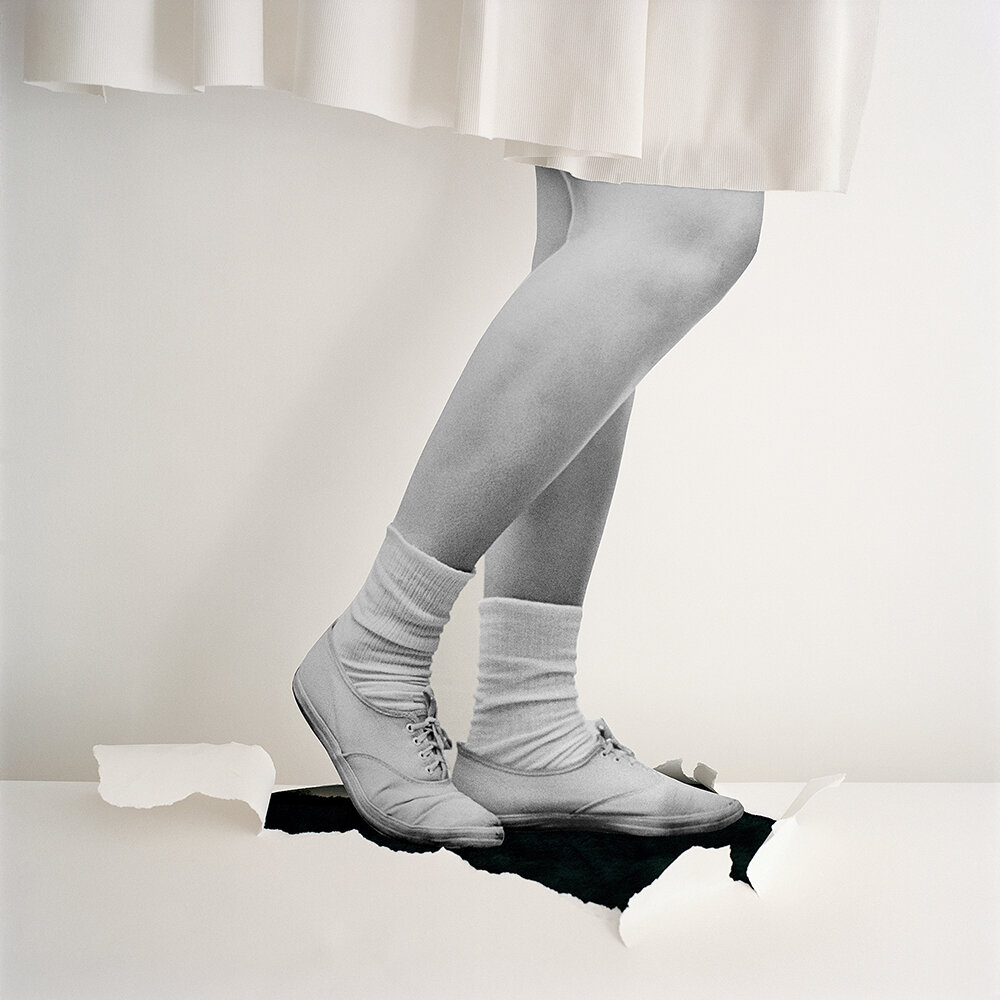
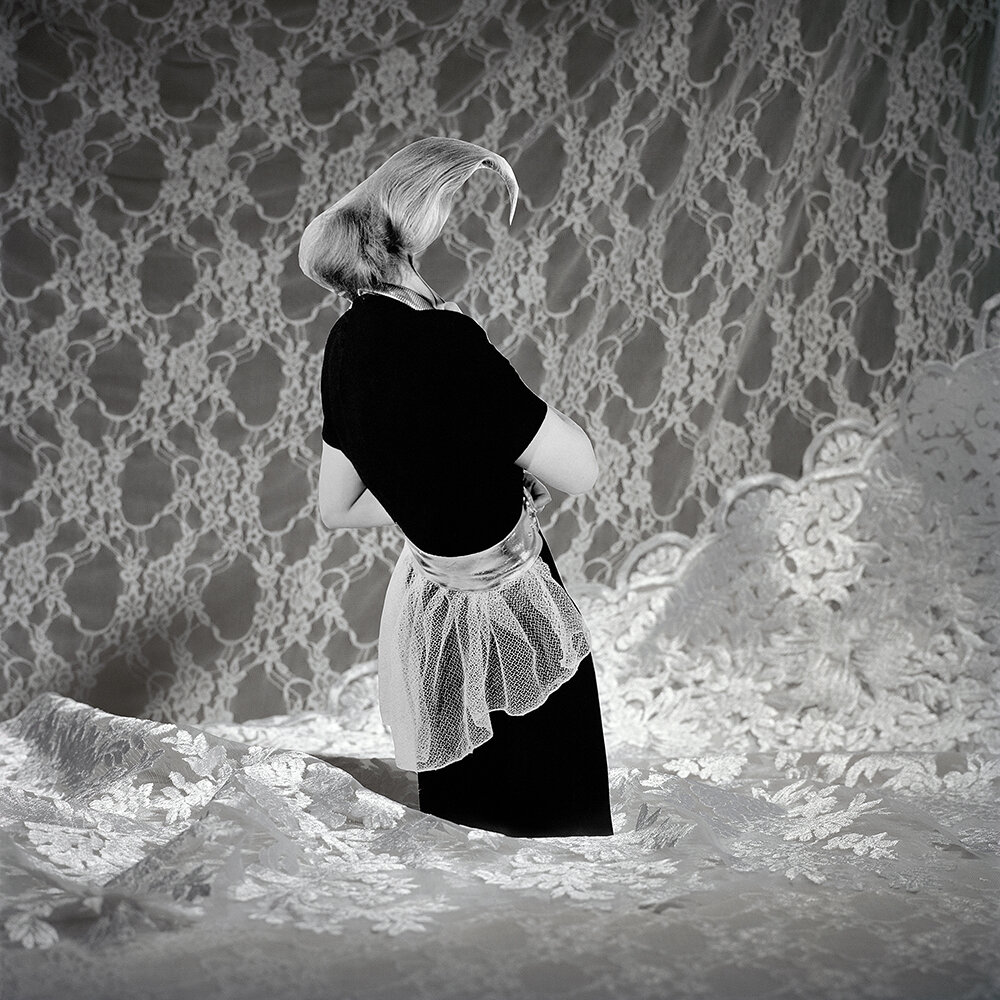
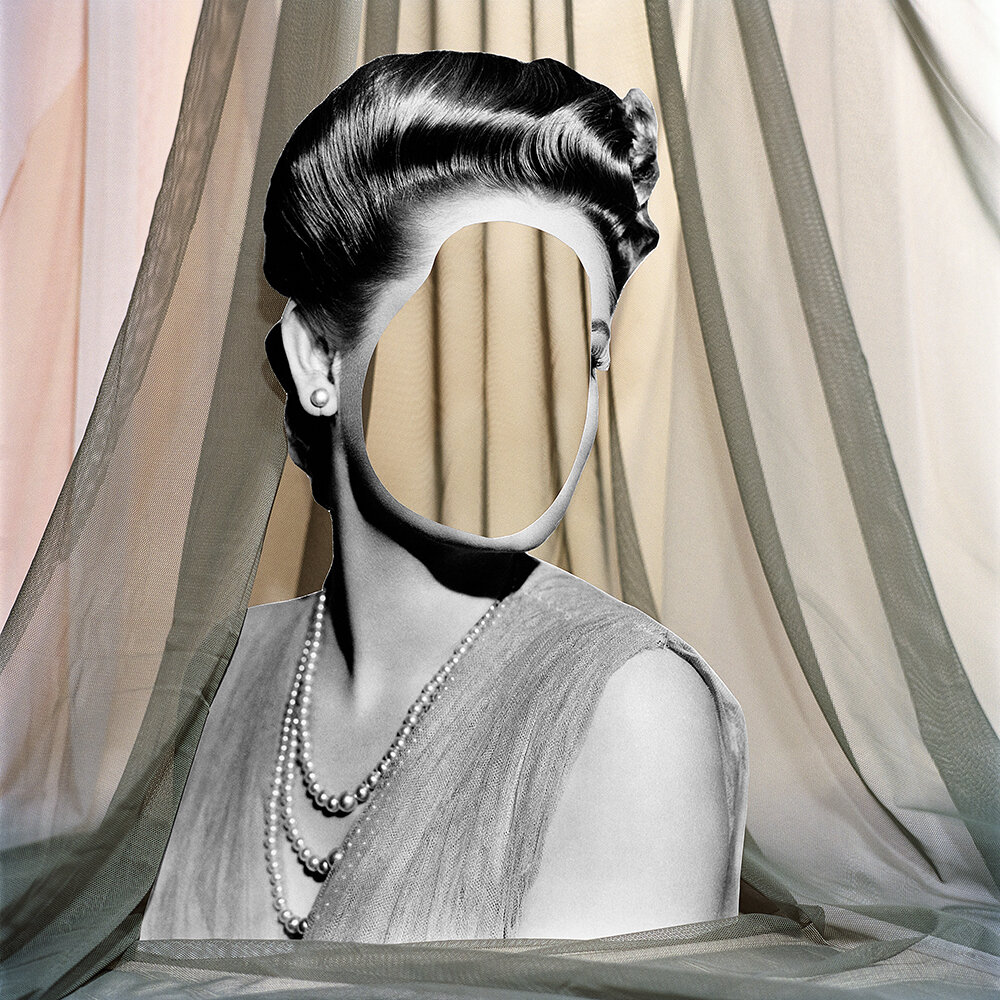
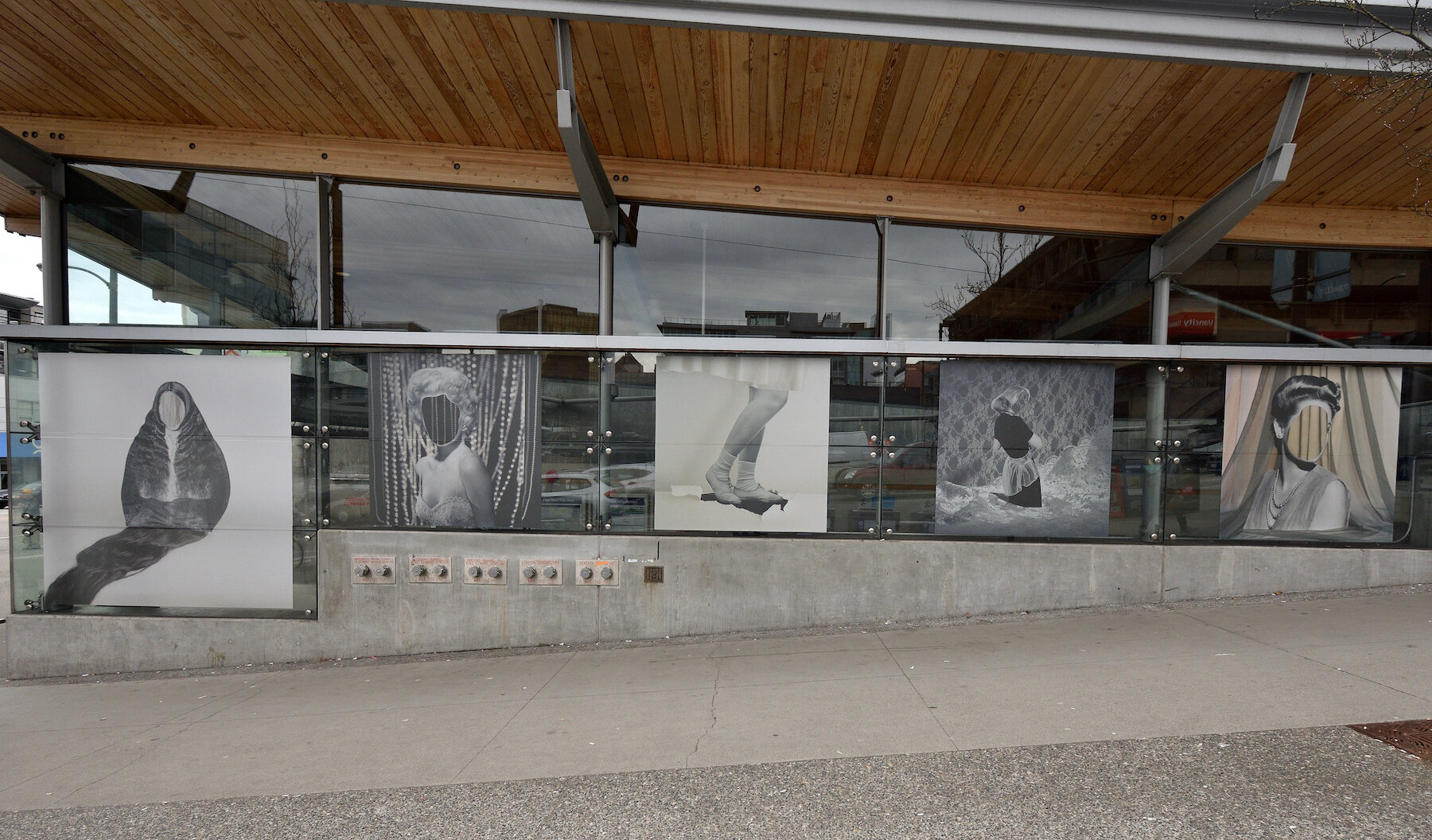
Lacuna (ongoing)
In the series Lacuna, I investigate how photography and the human body are connected, with a special interest in the female body and its representation in our society. “Lacuna,” a Latin word, means an unfilled space, gap, or cavity, especially in bone. I am interested in the fact that neither image nor body can ever represent a totality: the image always shows only a part and so does the body, as it conceals the thoughts and the inner life of its individual. The body never seems to be whole or complete, since it is subject to constant change and the processes of ageing.
In this project, vintage press photos and portraits of women from the 1950s and ’60s are partially cut, set up in three-dimensional collages, merged with other materials such as fabric, fur, and hair, and then photographed. I am interested in how the body and photographic image not only influence each other but also share certain traits: they both act as canvases for our projections and are inherently transformable objects.
Through this intervention, I emphasize the images’ incompleteness. The faces of the depicted women are cut out, and what remains is only a figure, an outline, or a reference to a photographic image and the person it depicted. When the individuality of the image is dissolved, it becomes universal: a faceless surface onto which we can project and through which we can question our preformed ideas of body image, femininity, and gender roles.
Lacuna was shown at Capture Festival 2019 as part of the Canada Line Public Art Project.